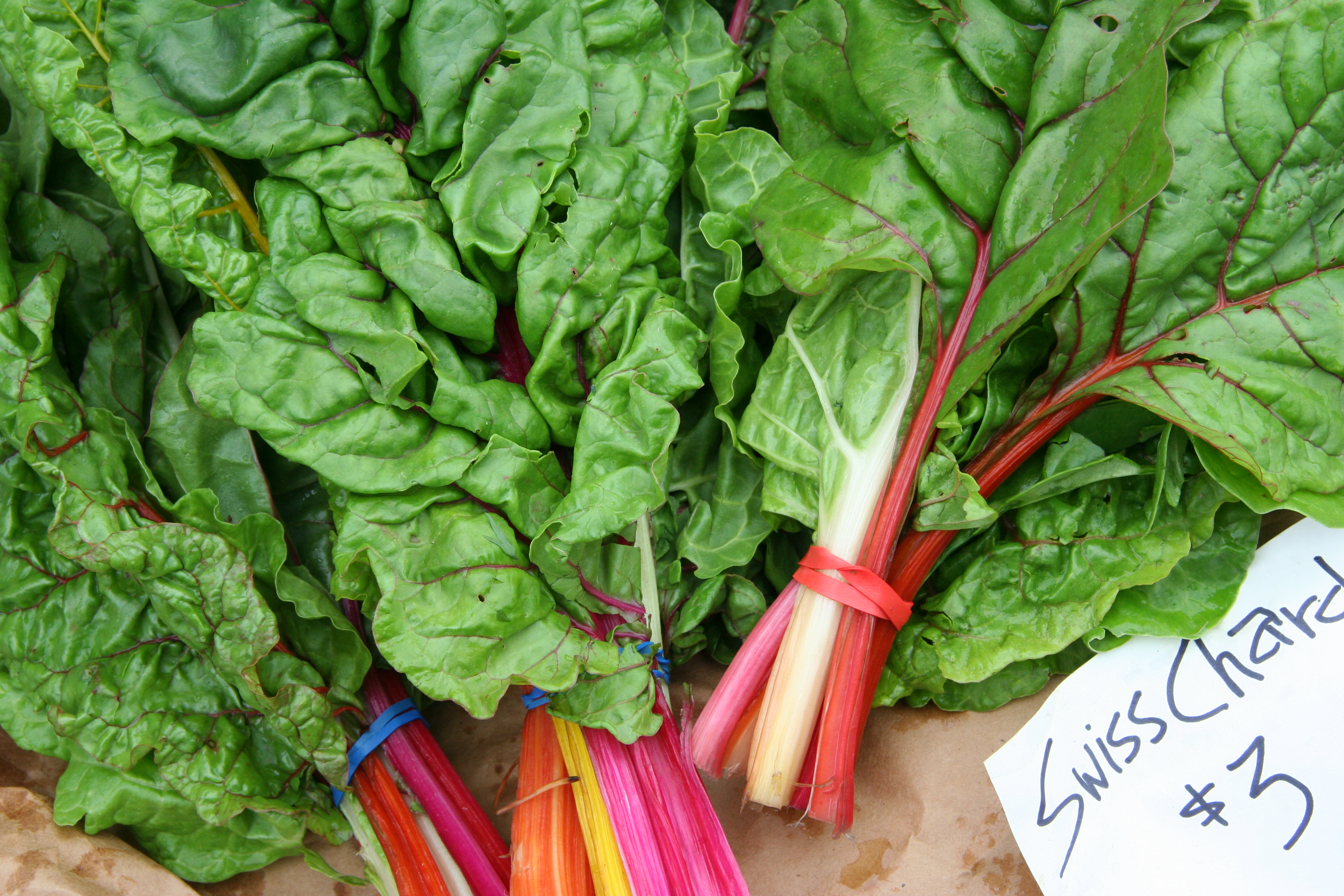 |
| Swiss chard | Jonathunder |
Apparently originally from Sicily one of the great things about Swiss chard (Beta vulgaris) is that you can eat the leaves when they are young and quite tender but they are still tasty when they are larger and more mature. The ruby and rainbow varieties are more colorful and I confess a preference that is totally related to that color as I enjoy seeing their beautiful stems and leaves in the garden or in my dishes. For productivity however, the plain green variety does seem to produce more heavily. On the other hand, like beets, the red and rainbow varieties are higher in betacyanins, which are antioxidant, anti-inflammatory and believed to support detoxification.
Nutritionally, like all the dark leafy greens, Swiss chard is a powerhouse food to add to your diet. One cup of the cooked greens provides more than the RDV for vitamin K and vitamin A and around 50% of the RDV for vitamin C. It also delivers a substantial amount of minerals like magnesium, manganese, potassium, and iron.
Recently I came across these two recipes for Swiss chard from Martha Rose Schulman in her New York Times column and they look so delicious they will definitely be included in how we eat this fabulous green this summer.
Stir Fried Swiss Chard and Red Peppers
Swiss Chard and Chickpea Minestrone
What's your favorite way to eat this wonderful leafy vegetable? I'd love it if you'd share a recipe or two.
No comments:
Post a Comment